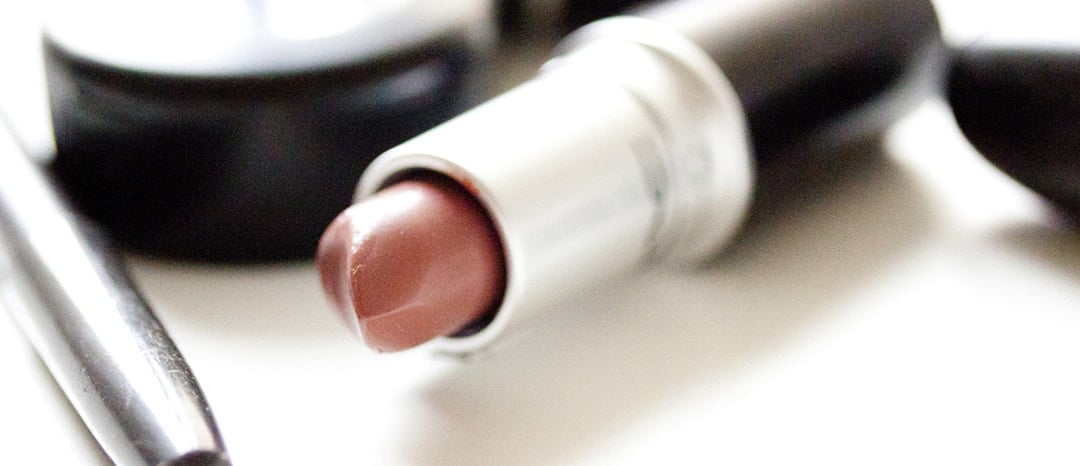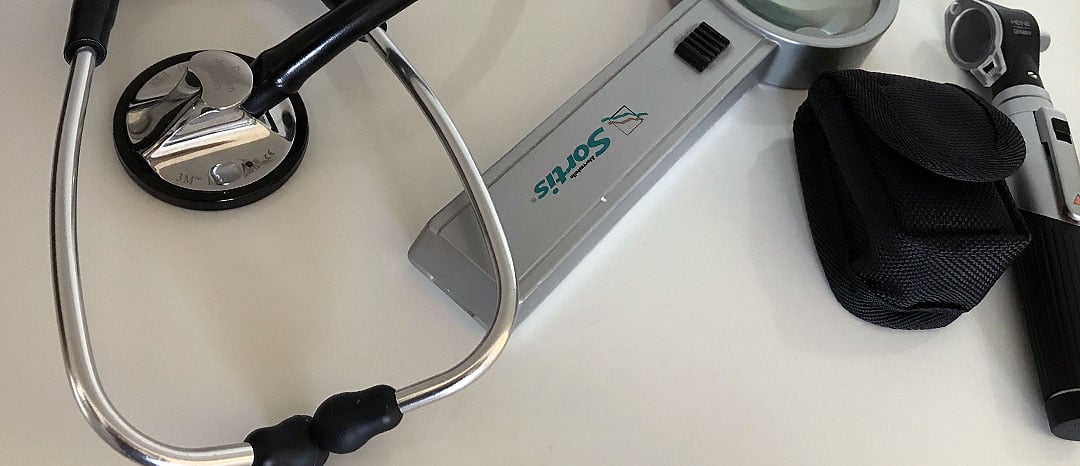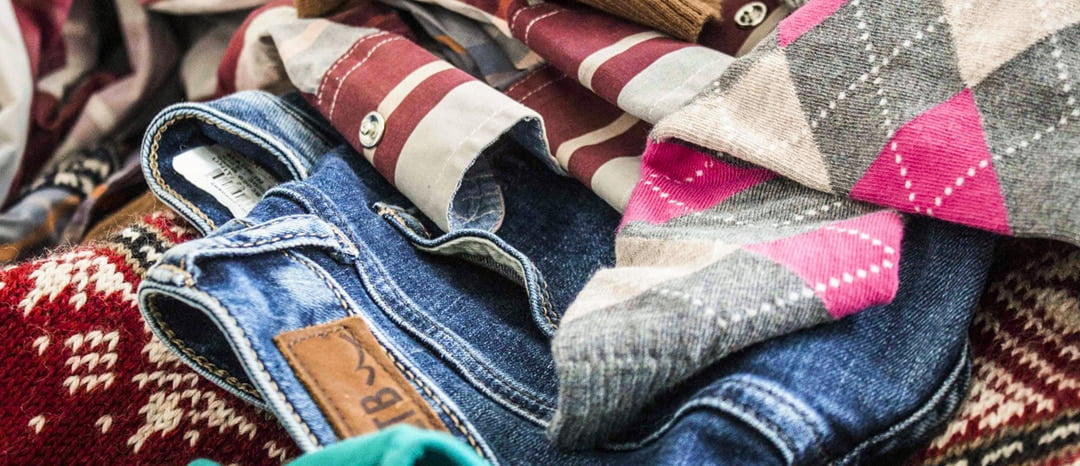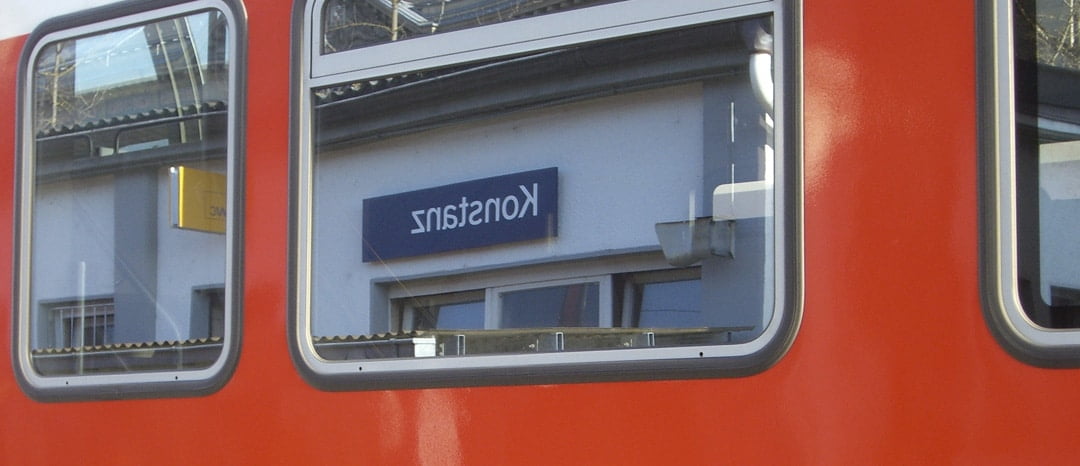
von Annik Rubens | 13. April 2018 | Absolute Beginner, SG Podcast-Episode
Welcome to a typical German family! Let’s see what everybody is called. Let’s start with the parents. Parents are called „Eltern“ by the way. Eltern. Father and mother are very similar to the English words, they are „der Vater“ und „die Mutter“. Always learn the article with the words, that makes it so much easier later on!
Then there is the child, „das Kind“. Das Kind. Very important in almost every family are the grandparents. „Die Großeltern“. Die Großeltern. They are „der Großvater“ and „die Großmutter“. Kids often call them „Oma“ and „Opa“. Oma is Grandma, Opa is Grandpa.
Maybe the kid has siblings. Siblings are called „Geschwister“. Die Geschwister. There is the sister, „die Schwester“, and the brother, „der Bruder“. Schwester und Bruder.
On Sunday there will be a visit by an uncle. „Der Onkel“ is coming to visit. He is bringing his wife, „seine Frau“. Die Frau. Or to be more precise: Die Ehefrau – if they are married. He is also bringing his kids, who are the cousins of the kid we are talking about. Der Cousin und die Cousine. There are German words for the cousins, but they are very outdated and we use the French words with French pronunciation. Cousin und Cousine.
Let’s make it a little more complicated. If I have a sister and she is married, then her husband is my „Schwager“. Der Schwager. If I have a brother and he is married, then his wife is my „Schwägerin“. Die Schwägerin.
If I am an aunt myself, eine „Tante“, die Tante, then I have nieces and nephews. They are called Nichten und Neffen. „Die Nichte“ is the niece and „Der Neffe“ is the nephew.

von Annik Rubens | 24. Februar 2017 | Absolute Beginner, SG Podcast-Episode
Many of my female listeners asked me to talk about make-up. So let’s start with what you say if you apply make-up. You say: „Ich schminke mich.“ Sich schminken. All the things you need for painting your face so to speak are „Schminke“. Die Schminke. Many words we use are the English words, for example „make-up“ means the foundation for your skin. „Das Make-Up“. Then there is „Lidschatten“. Der Lidschatten. „Lid“ is the upper part of your eye, and „schatten“ is shadow. Eye-shadow. Lidschatten. Then there’s „Wimperntusche“. „Wimpern“ are the eye-lashes and „Tusche“ is ink. Die Wimperntusche is mascara – but don’t worry, most people understand „Mascara“ as well. Your eyebrows are „Augenbrauen“ – die Augenbrauen. It’s the same word. And then we need lipstick, „Lippenstift“. „Lippen“ are your lips, „Stift“ is a pen. Der Lippenstift.
At the end of a long day, when you want to remove the make-up, we use the verb „abschminken“. Ab-schminken. The correct sentence would be: „Ich schminke mich ab.“
And what about your hair? For your hair you need „einen Kamm“ – a comb, „einen Kamm“. Der Kamm. Or a brush. Die Bürste. Die Bürste. In both cases you can say: „Ich kämme meine Haare“.
If you want to part your hair, you are wearing a „Scheitel“. Der Scheitel. If it’s parted in the middle of your head, it’s „der Mittelscheitel“. If it’s parted to the side, it’s „der Seitenscheitel“.
If you have long hair, you can wear it in a ponytail. „Ein Pferdeschwanz“. Der Pferdeschwanz. „Ich mache mir einen Pferdeschwanz.“ For a ponytail you need „einen Haargummi“ – a scrunchy. Der Haargummi. Oh, and talking about ponys: If a woman in Germany has a „Pony“ it means she wears bangs, so her hair is short on her forehead. Der Pony. Don’t misuse the article: „Der Pony“ is a hairstyle, „das Pony“ is a small horse.

von Annik Rubens | 24. Mai 2016 | Absolute Beginner, SG Podcast-Episode
I hope you’ll never get sick when you’re travelling in Germany, but we’re going to the doctor today, ok? First, you might make a call to get an appointment. With an appointment, you don’t have to wait too long to see the doctor. So you call the „Praxis“, that’s what the doctor’s office is called, „Praxis“, and tell the Sprechstundenhilfe, that’s the woman answering the phone: „Ich möchte einen Termin vereinbaren.“ Or a little less polite: „Ich brauche einen Termin“, meaning: I need a doctor’s appointment. The woman might ask you: „Worum geht es denn?“, meaning: What’s this about? And you can tell her: „Ich habe Halsweh“, or „Ich habe Kopfweh“. You see: the syllable „weh“ means pain in this case. So you tell them where it’s hurting you. Der Hals is the throat, der Kopf is the head, der Bauch is the stomach.
When you have your apointment, you try to be there on time. When you enter the Praxis, you go to the counter and tell them your name. You say: „Guten Tag. Mein Name ist Miller. Ich habe einen Termin um drei Uhr.“ That means: „Hello, my name is Miller, I have an apointment at three o’clock.“ The woman then might ask for your insurance card, „Ihre Versichertenkarte bitte“. After everything is checked, she will tell you: „Gehen Sie schonmal vor ins Wartezimmer.“ The „Wartezimmer“ is the waiting room. When you enter it you can say „Guten Tag“ to the other patients waiting there. The doctor will call you into his Arztzimmer, the doctor’s office. Usually he comes into the waiting room (or sends his assistant), saying either your name or simply „Der nächste bitte!“ meaning: Next one, please.
You tell him where it hurts – if you don’t know how to say it, just show him with your hands. Maybe he says: „Machen Sie sich bitte frei.“ This is hard to understand, isn’t it? It means: Get undressed. Ususally just the upper part of your body. When he’s done examining your body, he will say: „Ich gebe Ihnen ein Rezept.“ The „Rezept“ is a piece of paper. With this, you go to the next pharmacy to get your medicine. Maybe the doc will also say: „Gute Besserung!“ meaning: Get well, soon!

von Annik Rubens | 26. Januar 2016 | Absolute Beginner, SG Podcast-Episode
Let’s get dressed today! First of all, we need underwear. „Unterwäsche“. „Ein Unterhemd und eine Unterhose“. An undershirt and underpants. Or a bra, „einen BH“. „BH“ stands for „Büstenhalter“ – holding breasts… And socks, „Socken“. Or tights – „eine Strumpfhose“. What else? Maybe pants, „eine Hose“. Or a skirt, „einen Rock“. That’s easy, isn’t it? Or a „Kleid“. A dress. „Ein Kleid“. If the pants are too big, we can wear a belt, einen „Gürtel“.
We borrowed the English word T-Shirt, and we also use the word Sweatshirt. A knitted sweater is called „ein Pulli“, I guess it’s the shortform of pullover. A T-Shirt with long sleeves for women can be simply an „Oberteil“.
If you’re getting dressed to go to work you may want to put on a suit. For men it’s called „Anzug“. Women wear a „Kostüm“. That’s a jacket and a skirt. Or a „Hosenanzug“, meaning a jacket and dress pants. For men it’s just „der Anzug“. Of course they also need to wear a shirt, ein „Hemd“. And a tie, „eine Krawatte“. A more colloquial word for „Krawatte“ is „Schlips“. And if they want to wear a bow-tie, it’s called a „Fliege“, that’s the same word as for a fly.
One thing is missing: We are still barefoot! So we need shoes. What kind of shoes? Tennis shoes are called „Turnschuhe“. High heels are „Stöckelschuhe“. Or maybe boots? They are called „Stiefel“.
Is it cold outside? Then we need another layer of clothes. A warm jacket, eine „Daunenjacke“. Or just a „Winterjacke“, if it is not a down coat. Then maybe a scarf, „einen Schal“. A cap, „eine Mütze. And gloves, „Handschuhe“. That’s a funny word, isn’t it? „Handschuhe“. Hand-shoes.
We are finally dressed! Wir sind angezogen! Let’s go!
von Annik Rubens | 9. November 2015 | Absolute Beginner, SG Podcast-Episode
Welcome to Absolute Beginner Nr. 7. Let’s go shopping today! First of all there’s a difference. We use the word „shopping“ when it’s buying something for fun, like clothes or DVDs. But we use the German word „Einkaufen“ if we want to go grocery shopping. Let’s start with that. Imagine we are in a supermarket. You need a shopping cart for all the things you want to buy. You don’t see them so you ask somebody: „Entschuldigung, wo sind die Einkaufswagen?“ If you want to buy only a few things, you don’t need a shopping cart, but a small basket. You ask: „Entschuldigung, wo sind die Einkaufskörbe“?
Then you go and pick up the things you need. Let’s say you can’t find mustard. Then you ask: „Entschuldigung, wo finde ich den Senf?“ Or „Entschuldigung, wo ist der Senf?“. You see, all these questions start with „Entschuldigung“. It just means „excuse me“ and is a polite way to catch somebody’s attention. „Entschuldigung“.
You then go to the „Kasse“ to pay. Maybe the cashier asks you: „Brauchen Sie eine Tüte?“ If you want to have a bag to put your groceries in, you say: „Ja, bitte“. If not you say: „Nein, danke“. Usually these bags cost money in supermarkets, but not in clothing stores. If you want to pay cash, then please go ahead. If not, you say: „Ich möchte bitte mit Karte zahlen“. Or shorter: „Mit Karte bitte“. Then you can pay with debit card, sometimes even with credit card, although they are not as common in Germany as in some other countries. Before you leave the store you can say „Auf Wiedersehen“ to the cashier.
Let’s go shopping now, to a clothing store. You want to try on a pair of jeans, but can’t find the dressing room. You ask somebody working there: „Entschuldigung, wo sind die Umkleiden?“ If you are in the dressing room, maybe somebody will ask you: „Passt alles?“ meaning something like: „Does it fit well?“ You can answer with: „Ja, danke“ or with: „Nein, die Hose ist zu klein“ or „Nein, die Hose ist zu groß“ or „Nein, die Hose ist zu eng“ or „Nein, die Hose ist zu lang“. You see, there’s many things that can be wrong with a pair of pants. „Klein“ means small, „groß“ means big, „eng“ means tight and „lang“ means long. Oh, I almost forgot the pants can be too short, too. „Nein, die Hose ist zu kurz“. That never happens to me. 😉
Maybe you see something but you can’t decide whether to buy it or not. You want them to hold on to it for you until you make your decision. You say: „Können Sie mir das bitte zurücklegen?“ or „Kann ich das bitte zurücklegen lassen?“
Or did you buy something and realized it was too small? Then take it back and say: „Ich möchte das bitte umtauschen“, to exchange it for the right size.
Well, that’s it for today. Viel Spaß beim Einkaufen! Have fun shopping!

von Annik Rubens | 17. März 2015 | Absolute Beginner, SG Podcast-Episode, Verkehr und Reisen
Welcome to a German train-station! We’re at a „Bahnhof“ today, talking about different words you might need there. First of all, you need to check the „Fahrplan“, that’s the schedule of the trains. Fahrplan. On this „Fahrplan“, there are two categories: Trains arriving and trains leaving the station. The arrival is called „Ankunft“, the departure is called „Abfahrt“. Ankunft and Abfahrt.
On this schedule you look for the train you want to take. You check the time it is leaving – the „Abfahrtszeit“. Zeit is the time, Abfahrt the departure. So the time of departure. Abfahrts-Zeit. The next information you need is the right track, so you can find your train. The track is called „Gleis“. So maybe your train to Berlin is „auf Gleis 4“. On track 4. Auf Gleis 4.
Let’s say there is no schedule and you have to ask somebody. Then you can say: „Entschuldigung“, to catch their attention. Entschuldigung. It essentially means „sorry“ or „excuse me“. Then you can ask: Where do I find the next train to Berlin? „Wo finde ich den nächsten Zug nach Berlin?“
Or you go to a ticket booth and say: I need a ticket to Berlin, please. „Ich brauche bitte eine Fahrkarte nach Berlin.“ The person then will maybe ask: „Einfache Fahrt oder hin und zurück?“, meaning do you need a single ticket or a return ticket? So you say: „Einfache Fahrt, bitte.“ or „Hin und zurück, bitte“. Maybe they also ask if you want to travel first class or second. „Erste Klasse oder zweite?“ Most of the time you answer „Zweite Klasse, bitte“, but sometimes first class is cheaper than second! Don’t ask me why… The next question is: „Soll ich einen Sitzplatz für Sie reservieren?“ The „Sitzplatz“ is simply the seat. You can make a reservation for a certain seat on the train. This costs extra, but it guarantees you have a seat – when it’s crowded you sometimes will need to stand the whole way. You can decide if you want a seat on the aisle or at the window – it’s a „Fensterplatz“ near the window, „am Gang“ near the aisle. You can also choose between „im Großraumwagen“ or „im Abteil“ on certain trains. The „Großraumwagen“ is just one long carriage with seats, like a bus. Other areas of the train are compartmentalized, „Abteile“.
If you have your ticket, your „Fahrkarte“, you run to catch your train. At least that’s what I always have to do. You look for the right carriage number, the „Wagennummer“, and jump in. When the train has departed, the „Schaffner“ will come and will want to see your ticket.
Sometimes the train is delayed, it has „Verspätung“. Relax – there’s nothing you can do about it. Have a safe trip! Gute Fahrt!?







